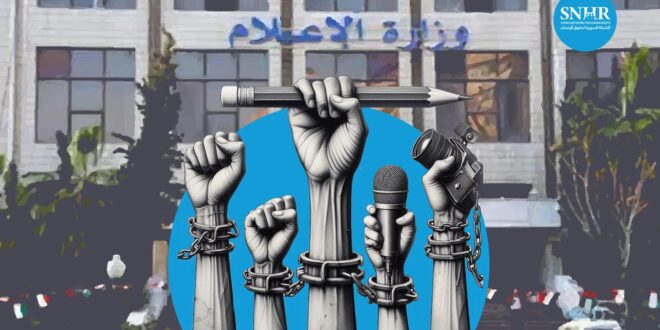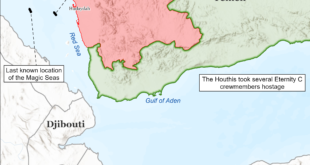A southwestern Kentucky man has been convicted in federal court of travelling to Syria about a decade ago to train and fight with the Islamic State of Iraq and al-Sham, colloquially known as ISIS, the U.S. Attorney’s Office announced Wednesday.
According to USA Today, a federal jury in Bowling Green, Kentucky, convicted Mirsad Hariz Adem Ramic, 34, on Tuesday of multiple terrorism charges related to his involvement with ISIS, the U.S. Attorney’s Office of the Western District of Kentucky said in a news release Wednesday. Ramic was charged with providing material support to ISIS and receiving military-type training from the organization.
He faces a statutory maximum penalty of 50 years in prison, a fine of $750,000, and a term of supervised release up to life.
Ramic and two other people flew to Turkey in 2014 and then travelled to Syria to join ISIS, according to court documents and evidence presented at trial. After joining the terrorist group, Ramic attended an ISIS training camp, where a photo of Ramic posted on social media depicted him standing in front of a truck that displayed an ISIS flag.
Ramic, a dual U.S.-Bosnian citizen, then joined a fighting unit comprised primarily of Bosnian foreign fighters and participated in ISIS’s offensive in Kobane, Syria, the U.S. Attorney’s Office said.
Exodus of doctors and health workers leave sick and ailing Syrians out on a limb
More than a decade of civil war, economic sanctions, regional tensions, and a devastating earthquake have left Syria’s healthcare system in tatters and, according to a top World Health Organization official, forgotten by the international community, The New Arab reported.
Hanan Balkhy, WHO’s regional director for the Eastern Mediterranean, said last week that almost half of Syria’s health workers had fled the war-torn country. She called for innovative approaches to halt the exodus of Syrian medical staff abroad.
In an interview with the AFP news agency, she said that young doctors needed to be offered better prospects than practicing “fourth-century” medicine amid dire conditions, “where you cauterize people and send them on their merry way.”
The International Rescue Committee highlighted in a 2021 report that about 70 percent of the medical workforce had fled the country, leaving one doctor for every 10,000 people.
Balkhy told AFP that in addition to earning extremely low wages, if any at all, Syria’s medical staff faced a severe shortage of resources and equipment, including operating rooms, sterilization units, and medications.
However, according to Dr. Zaher Sahloul, a Syrian-American critical care specialist and president of the medical NGO MedGlobal, every young Syrian physician he knows either plans to or dreams of leaving Syria and pursuing opportunities in other countries, “especially Germany, other European nations, or the US.”
“The flight is across the board and not related to war or conflict,” he told Arab News.
According to data released by the German Medical Association earlier this year, 6,120 Syrian doctors work in Germany without holding a German passport. These doctors account for 10 percent of the EU country’s foreign medical staff.
Reconstructing heritage after war: what we learned from asking 1,600 Syrians about rebuilding Aleppo
Published on June 12, 2024 in The Conversation, this study by Benjamin Isakhan and Lynn Meskell explores the views of 1,600 Aleppo residents on heritage restoration post-conflict. The research identified key themes: prioritizing security over heritage, equal importance for religious and non-religious sites, transforming heritage sites for community use, and local control over restoration.
Key Findings:
Prioritization: Safety, services, and employment were seen as more urgent than heritage reconstruction.
Restoration Preferences: While 98% agreed on restoration, 57% favored transforming sites into modern facilities over historical accuracy.
Preferred Leadership: The Syrian government and local residents were preferred over international and regime allies for leading reconstruction.The study suggests that effective heritage restoration in conflict zones requires close collaboration with local communities, ensuring efforts align with broader developmental goals and local preferences. These insights are relevant for future restoration projects in other war-torn regions like Ukraine and Gaza.
The Syrian Regime’s Law No. 19 of 2024 on Establishing a Ministry Ministry of Information Blatantly Violates Freedom of Media, Opinion, and Expression
The Syrian Network for Human Rights published a report which on the newly formed Ministry of Information. Published on June 13, 2024, the report criticizes Syria’s Law No. 19 of 2024, which establishes a Media Ministry. The law is seen as a tool for the regime to strengthen its control over journalists, media content, and impose further censorship, thus violating freedom of the press.
Key Points:
Control and Censorship: The law consolidates regime control over media, increasing censorship of private press and TV production.
Historical Context: Syria ranks low globally in press freedom, with the regime responsible for significant suppression of journalists since the 2011 uprising.
Legislative Hegemony: The regime uses its legislative power to pass laws that violate international human rights, consolidating executive control over media.
Contradictions and Violations: Law No. 19 contradicts both international and domestic laws, perpetuating restrictions on freedom of opinion and expression.
International Response: The report urges the UN and international community to pressure Syria to repeal restrictive laws and ensure the safety of journalists, referencing various international resolutions and the UN Plan of Action on the Safety of Journalists.The report made a few recommendations, calling for the repeal of all legislation that violates international law and restricts freedom of opinion and expression. It called for ensuring the safety of journalists and end impunity for violations against them and removing legal grounds for detaining journalists for practicing their profession.
How Syria Is Trying To Free Itself From The Grip Of Iran
Published on June 13, 2024, by Ahmad Rafat for Kayhan-London and Worldcrunch, this analysis explores how Syria, under President Bashar al-Assad, is distancing itself from Iran while moving closer to the Arab world, influenced by Russia’s interests.
Key Points:
Historical Context: Iran and Russia helped Assad suppress the 2011 uprising and resist rebel militias. Despite this, Assad maintains stronger ties with Russia than with Iran.
Recent Developments: Assad visited Tehran on May 30 to meet with Supreme Leader Ali Khamenei but displayed less enthusiasm compared to his interactions with Russian President Vladimir Putin.
Regional Dynamics: Assad has avoided involvement in the Israel-Hamas conflict, despite Iranian pressures. Syrian regime officials are divided on this hands-off approach, with some favoring closer ties with the Arab world.
Security and Influence: Under Russian influence, Syria has allowed Israel to strike Iranian and Hezbollah positions within its territory. Key security positions have been filled with officials favoring better ties with Arab states rather than Iran.
Reintegration into the Arab World: Assad’s participation in Arab League summits marks a shift towards Arab states, which, along with Russia, promise significant investment in Syria’s reconstruction if it distances itself from Iran.
Iran’s Position: Inside Iran, politicians criticize Syria for not repaying debts and suspect possible leaks to Israel from Syrian intelligence. Iran feels sidelined in Syria’s reconstruction plans.The report highlighted the shift in alliances could impact the balance of power in the Middle East, particularly concerning Israel and the influence of the Revolutionary Guards.
It pointed out how Syria’s distancing itself from Iran may lead to increased investment from Arab states and Russia, aiding its reconstruction efforts.
It also underscored Assad’s strategic realignment highlights the complex interplay of regional powers and the pragmatic approaches of state leaders.
 Eurasia Press & News
Eurasia Press & News


